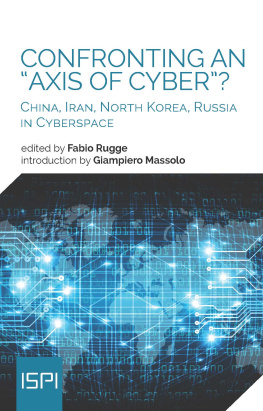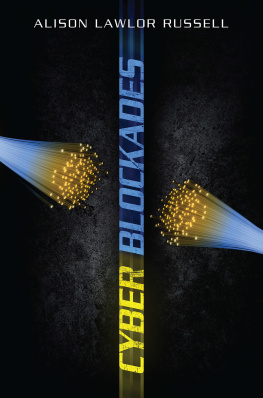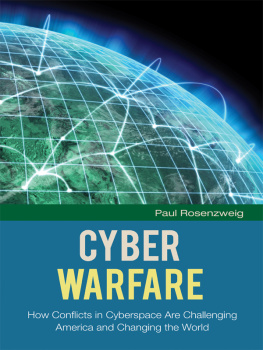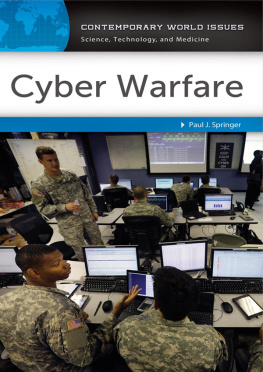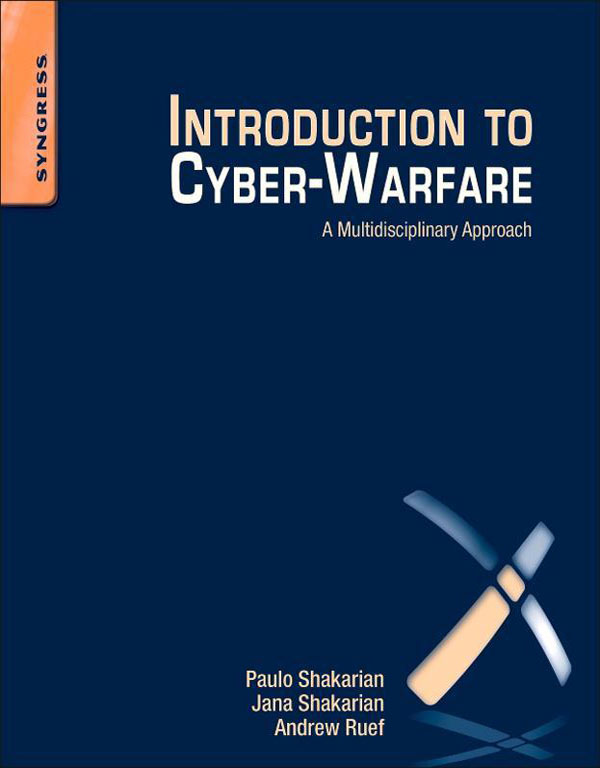Copyright
Acquiring Editor:Chris Katsaropoulos
Development Editor:Benjamin Rearick
Project Manager:Malathi Samayan
Designer:Mark Rogers
Syngress is an imprint of Elsevier
225 Wyman Street, Waltham, MA 02451, USA
2013 Elsevier, Inc. All rights reserved.
No part of this publication may be reproduced or transmitted in any form or by any means, electronic or mechanical, including photocopying, recording, or any information storage and retrieval system, without permission in writing from the publisher. Details on how to seek permission, further information about the Publishers permissions policies and our arrangements with organizations such as the Copyright Clearance Center and the Copyright Licensing Agency, can be found at our website: www.elsevier.com/permissions.
This book and the individual contributions contained in it are protected under copyright by the Publisher (other than as may be noted herein).
Notices
Knowledge and best practice in this field are constantly changing. As new research and experience broaden our understanding, changes in research methods or professional practices, may become necessary. Practitioners and researchers must always rely on their own experience and knowledge in evaluating and using any information or methods described herein. In using such information or methods they should be mindful of their own safety and the safety of others, including parties for whom they have a professional responsibility.
To the fullest extent of the law, neither the Publisher nor the authors, contributors, or editors, assume any liability for any injury and/or damage to persons or property as a matter of products liability, negligence or otherwise, or from any use or operation of any methods, products, instructions, or ideas contained in the material herein.
Library of Congress Cataloging-in-Publication Data
Application submitted.
British Library Cataloguing-in-Publication Data
A catalogue record for this book is available from the British Library.
For information on all Syngress publications visit our website at http://store.elsevier.com
ISBN: 978-0-12407-814-7
Printed in the United States of America
13 14 15 16 12 11 10 9 8 7 6 5 4 3 2 1

Preface
Since Stuxnet emerged in 2010, cyber warfare has truly entered into public discourse. But what is cyber war and what do we really know about it? Much has been written about the topic that has taken a solely information assurance perspective or a purely policy perspective. The former tends to focus on low-level technical details that are already described extensively in computer security books, whereas the latter emphasizes high-level policy decisions that most readers can do little to affect. All the while, details of the highly interesting cyber incidents are often overlooked. As a result of this omission, the current literature leaves a very basic question unanswered: how have human beings conducted cyber-warfare?
In this book, we seek to close the gap and provide the reader with numerous case studies highlighting what we felt were some key aspects of cyber war. Our interdisciplinary approach includes plenty of technical information assurance details, although these are not the sole focus of the book. In each case study, we also attempt to highlight relevant military, policy, social, and scientific issues at play. We hope that reading this book is a great learning experience for the readeras writing it certainly was for the authors.
Paulo and Jana would like to thank all of their friends and coworkers who supported them throughout the writing of this book as well as their dog Sage who loudly assures them of how lively the neighborhood is.
Andrew would like to thank his wife, Alice, for her love and support. He would also like to thank his friends and coworkers, for years of education and experience.
All the authors would like to thank all reviewers (including the anonymous ones), supportive employers, and the good people at Syngresswho helped make this book possible. In particular, we would like to thank (in no particular order) Steve Elliot, Ben Rearick, Pat Moulder, Sushil Jajodia, Gerardo I. Simari, Roy Lindelauf, Jon Bentley, Eugene Ressler, J. Scot Ransbottom, Dan Guido, Dino Dai Zovi, T.J. OConnor, Charles Otstott, V.S. Subrahmanian, and Greg Conti.
Paulo Shakarian
Jana Shakarian
Andrew Ruef
Note that the a is lowercase.
Foreword
The concept of cyber warfare has now become a regular part of public discourse. It dominates the contents of popular technical outlets such as Wired and SlashDot; it often appears in the more general media such as CNN, it has become a political priority in the United States, and a major concern for militaries around the world. But what do we know about this new dimension of conflict? There are many pundits that would have you believe that cyber warfare has put the world on edgeat any moment, the worlds computer systems can be sent into chaos by a clever teenager at a keyboard. On the other extreme, there are those who think that cyber warfare is overhypeda minor issue exaggerated by computer security firms and defense contractors to line their pockets. As with many issues, the real answer lies somewhere in between. While it is true that cyber weaponry can potentially cause great damage, we must also understand that when these weapons are used to further political means, the actors in question operate under certain constraintsand cannot wield these hi-tech instruments without encountering various consequences. So then the question becomes how are cyber warriors using these weapons in a political conflict? This suggests the need to study a history of sorts. Such a history of cyber is exactly what is presented in this book.
This book is a one-of-a-kind anthology of cyber case studies. As the cyber domain of warfare is very technical in nature, such details, mainly regarding information assurance, are a must. However, as the Internet has grown in a way where it touches many facets of our lives, studying cyber warfare in the vacuum of information assurance would lead us to place the incidents out of context. As this domain evolves, so must cyber warriorsand these warriors will need to look at problems in this area from many dimensions. Paulo, Jana, and Andrew are truly an interdisciplinary team, and this is reflected throughout this book. Relying on Paulos computer science background and military experience, Janas expertise in the social sciences and violent conflict, and Andrews industry experience as a security practitioner, this book weaves together the requisite interdisciplinary threads to allow the reader to appreciate the tapestry that is cyber warfare.
Cyber is a hot area today and will continue to be so for the foreseeable future. As societys dependence on technology is a given, its dependence on


